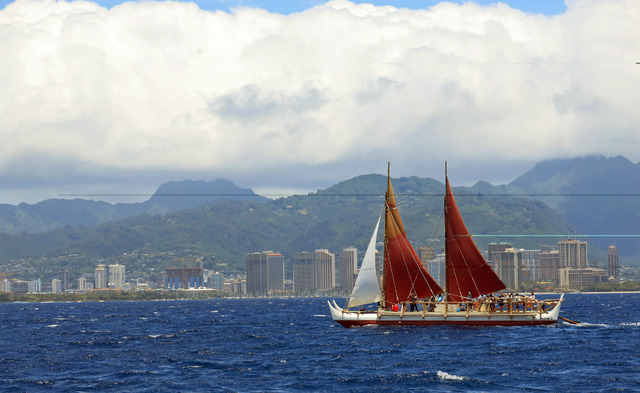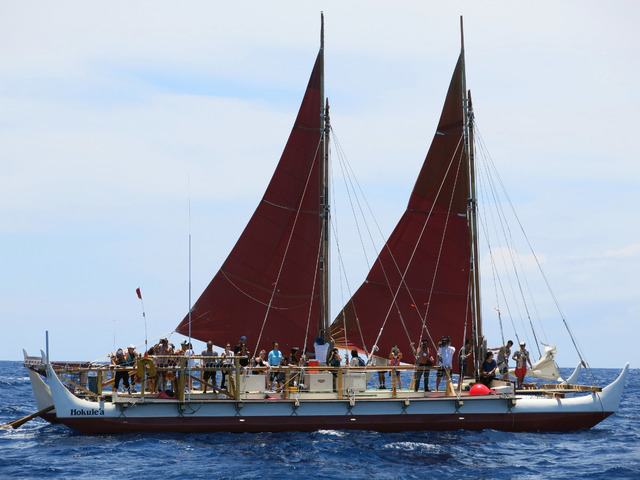HONOLULU — The Polynesian voyaging canoe that is guided solely by nature as it circles the globe has reached South Africa, the halfway point on its three-year journey and the most dangerous leg partly because of complicated ocean conditions. ADVERTISING
HONOLULU — The Polynesian voyaging canoe that is guided solely by nature as it circles the globe has reached South Africa, the halfway point on its three-year journey and the most dangerous leg partly because of complicated ocean conditions.
The double-hulled canoe Hokulea left Hawaii last year, and its crew members are sailing without modern navigation equipment. They are using the motion of the waves and the position of the stars to guide their path, sailing the way that brought the first Polynesians to the Hawaiian islands.
By the time the voyage is expected to end in 2017, crew members will have sailed more than 60,000 nautical miles and dropped anchor at 100 ports in 27 nations.
They arrived last week in Cape Town, South Africa, where crew members are teaching the local community about traditional navigation, Native Hawaiian culture and ways to care for the ocean.
“We’re here, we’re safe,” navigator Nainoa Thompson said Monday from Cape Town. “We got around South Africa safely.”
The journey is also about building relationships and connections at all their stops, Thompson said.
“To be honest, the majority of people don’t know much about Hawaiian culture or Hawaii,” he said.
He recounted a moment when Hawaii students who have joined up with the voyage met with children in Cape Town.
“We didn’t know how to connect until our children danced, then their children danced,” he said.
“We had a chance today to witness what world peace looks like and sounds like,” he added, describing the sounds of Hawaiian pahu drums beating along with African rhythms.
The stop was made possible with permission from Nobel Peace Prize winner Archbishop Desmond Tutu, who blessed the canoe during a 2012 visit to Hawaii, Thompson said.
“We’re finding the definitions of caring, compassion and aloha from many of the places that we go,” Thompson said, reflecting on hearing news of the attacks on Paris. “We’re just very blessed and very fortunate to be witness to it among all the stories of rage and anger.”
The canoe will spend two weeks off the water before departing across the Atlantic Ocean for the first time to South America. Up to 200 crew members have sailed with Hokulea so far, joining and leaving the journey at various points.
Hokulea was first built and launched in the 1970s in an attempt to revive Polynesian wayfinding. The first voyage to Tahiti in 1976 was successful, and the canoe became an icon amid an ongoing Native Hawaiian renaissance.
The latest voyage is called Malama Honua, which means “to care for our Earth.”
Hokulea is being escorted by sister vessel Hikianalia, which is equipped with a flotilla of gadgetry that connects the voyage via satellite uplink with classrooms of students throughout Hawaii and around the world.




